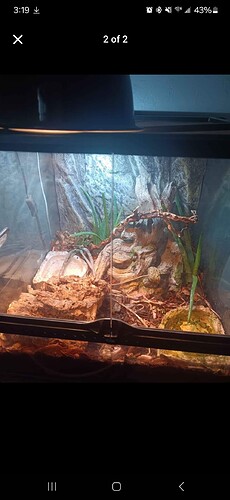Definitely toss the substrate if it’s wet. I’m guessing this is a Kenyan sand boa (though sharing a picture of the snake will help confirm that), as Kenyans are the most common sand boa species in captivity.
Assuming it is a Kenyan, this is an arid species, so they SHOULD NOT have wet substrate. I keep mine very dry, only giving a very light misting when I notice she’s in shed (and even that probably isn’t necessary, because she’s shed fine when I haven’t noticed and misted in time).
Sand boas are fossorial, so while many species do well on paper towels, as @cmills suggested, that is NOT what you want for a sand boa. They need to be able to burrow to feel secure, so the most important thing to give them is several inches (3+) of clean, dry, loose substrate. Aspen shavings work great, but you can use pretty much any loose substrate that will hold a burrow. Sand on its own isn’t great (despite the fact they’re called SAND boas), because it collapses and doesn’t hold burrows. But aspen, ReptiSoil, Jungle Mix, coco husk, top soil, that recycled paper bedding they sell for small mammals…any of that would work great.
Aside from substrate for burrowing, all they really need for cage furnishings are a couple hides and a water dish. And some people don’t even bother with hides, because they usually just burrow to feel secure.
For temps, I give my girl a hot spot of about 90F, warm end in the mid to high 80s, cool end in the low 80s. And as I already mentioned, I don’t really worry about humidity. If I notice she’s getting ready to shed, I’ll lightly mist a bit, but that’s about it. Kenyan sand boas have a wide range in the wild that encompasses a variety of climates, so they can tolerate a wide range of humidity. But you do want to keep their substrate dry.
